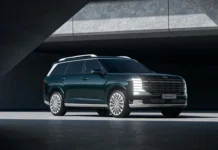
Automakers entered into a voluntary agreement that lean into California’s emissions standards.
California is currently at odds with the Trump administration over vehicle emissions targets. While the most populous state in the country leans toward more progressive targets, the Environmental Protection Agency, National Highway Traffic Safety Administration and the White House back freezing requirements at 2020 levels through 2026. seeks to roll back Obama-era policies and relax more aggressive standards for cars in the future. Now, four automakers — BMW, Ford, Honda and Volkswagen — have entered a voluntary agreement with California to comply with more stringent standards in the next decade.
Back in 2012, the Obama administration adopted more aggressive fuel economy targets. The rule called for a fleetwide efficiency average for automakers at 46.7 miles per gallon by 2025. Under the Trump administration’s proposal, that average would be capped at 37 mpg by 2026. Here’s more on the deal according to a Reuters report:
“Under the compromise struck with the four automakers, the stringency of the requirements would increase at a nationwide average annual rate of 3.7% annually starting in the 2022 model year through 2026, and 1% of that annual improvement could be covered by credits awarded for building electrified vehicles.
Aside from extending credits for building electric, plug-in hybrid and hydrogen fuel vehicles, the deal also hikes the cap for winning credits for fuel efficiency improvements not captured by traditional testing. The compromise would also remove a requirement to account for upstream emissions of fuels.

Meeting in the middle
The compromise strikes a balance between the 5 percent annual increase in fuel economy under the Obama rules and what the current proposal aims for. It also opens the door for other automakers to join onto the California deal. That way, by following the compromise, there would effectively be one set of national rules.
This sort of deal has come against a backdrop where the federal government is challenging California’s legal right to impose its own emissions standards. Instead, the Trump administration has argued federal law should supersede the state’s own mandates on emissions targets. Mary Nichols, head of the California Air Resources Board, said Wednesday that these four automakers wanted regulatory certainty. They also agreed not to legally challenge the state’s emissions requirements. “They didn’t want to face the expense, distraction and the bad publicity that comes from being a part of a big rollback on clean cars,” she said.
California has long been a driving force behind automakers’ decisions, especially as it comes to fuel economy and emissions. It is by far the largest automotive market in the U.S. As 12 percent of the country’s vehicle sales come from California, companies see fit to comply with the state’s regulations to sell their vehicles in the state. A dozen other states have also signed onto the state’s emissions rules, making it more of a sound strategy to reach some compromise on future vehicle emissions, rather than dance around a patchwork system of regulations where emissions requirements are strict in one state and lax in another.
There’s no word at the moment whether the White House will reopen discussions on a larger compromise. It may also continue to challenge California’s authority to make deals like this on its own. Nevertheless, we’ll have to wait and see exactly how this will effect the Trump administration’s proposal to roll back emissions standards.























